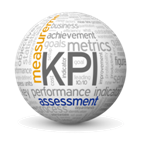
Severity: Warning
Message: Undefined variable $data
Filename: controllers/Home.php
Line Number: 1037
Backtrace:
File: /home/zecruiters/public_html/application/controllers/Home.php
Line: 1037
Function: _error_handler
File: /home/zecruiters/public_html/index.php
Line: 315
Function: require_once


There are various Key performance indicators in the recruitment industry to measure the efficiency.
4 Key performance indicators every talent leader should care about the most are as follows:

Perhaps the most critical question companies ask of their HR leaders is how long does it take to fill an open position? Also called Turnaround Time and Time to Offer, this KPI is calculated as the days that pass from the date a position opens till the date a candidate accepts an offer (including weekends and holidays) for the same.
Every day a position is left unfilled, a particular business need is left unserved or the company is not growing as fast as it should be. But, specifically, tracking this metric on a regular basis helps hiring teams achieve three things:
These are ratios obtained by comparing the number of people across various stages in your hiring pipeline, number of people who are shortlisted, interviewed, offered the job, and who accepted and joined.
To increase the efficiency of the whole process, it is indispensable to have a robust system which can capture reasons for each rejection and delay.

The Recruiting Cost Ratio is a simple yet direct indicator of the efficiency and productivity of your recruiting function. It helps you determine your average spend on recruiting activities in relation to the compensation being offered to your new hires. The calculation is as follows:

If your RCR percentage is low as compare to the industry, it indicates an efficient recruitment process.
Turnover rate is the percentage of people leaving the company within a given period of time. It is
usually calculated annually, but if you are just building the company, it is good practice to
compute it month on month.
The calculation is as follows:


A comparison against the industry average turnover can help identify where a company stands. A lower turnover rate indicates a high probability of well-fit, well-adjusted employee recruits. Turnover rate can be calculated for the company overall and the individual teams. A comparison of these numbers will answers questions like:
In summary, it is natural for your team to be pressed for time, given the functions they handle and the information they process. But tracking these fundamental indicators will empower any recruiting team to make better decisions. After all, the end goal is to build more than an efficient, smooth process that runs independently. It is to build an organization that outdoes itself every day.